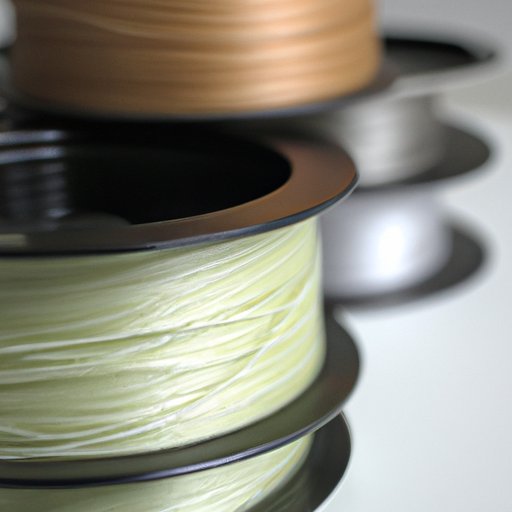I. Introduction
Fishing is an enjoyable and relaxing hobby for many people. However, choosing the right fishing line is crucial for a successful and safe fishing experience. Fishing lines come in different materials, sizes, and strengths, each designed for specific fishing conditions and fish species. This article is written to provide a comprehensive guide to the different types of fishing lines and their composition to help anglers select the perfect line for their fishing needs.
II. 5 Types of Fishing Line: What They’re Made Of and When to Use Them
Fishing lines come in five types: monofilament, fluorocarbon, braided, wire, and copolymer. Each type is suitable for specific fishing purposes, and each has a unique composition.
Monofilament lines are made from a single strand of nylon, have low visibility, and are ideal for freshwater fishing. Fluorocarbon lines are heavier than monofilament with high sensitivity and abrasion resistance, making them perfect for fishing in deep water with heavy cover. Braided lines, on the other hand, are incredibly strong, do not stretch, and are ideal for catching big game fish. Wire lines are made of a single strand of stainless steel wire and are ideal for saltwater fishing on reef structures. Copolymer fishing lines are similar to monofilament lines but are more resistant to abrasion and stretching and are ideal for saltwater fishing.

III. A Deep Dive into the Evolution of Fishing Line Materials
Early humans used natural materials such as silk, horsehair, and gut to make fishing lines, while anglers in ancient China used silk lines. Over time, fishermen began using synthetic materials such as nylon, which revolutionized the fishing industry. Since then, many advanced technologies have emerged, and new materials have been used to make stronger, more durable, and sensitive fishing lines.

IV. Fishing Line 101: Tips from Pro Anglers on Material Selection
Seasoned anglers often have a preference for specific fishing line types. Interviewing experienced anglers can provide valuable insight into the best fishing line material to use and how to choose the right material based on fishing location, target fish species, and line sensitivity or stretch. Pro anglers recommend selecting a line that will increase your chances of catching fish and ensure your fishing rod and reel functions correctly.
V. Fishing Line: The Science Behind the Strength
Fishing line materials are constructed using a blend of polymers, which determines the strength, diameter, stretch, abrasion resistance, and visibility of the line. Monofilament lines are made using a single strand of nylon while braided lines are formed by weaving together multiple strands of synthetic fiber. Fluorocarbon lines are made from polyvinylidene fluoride and copolymer lines by joining different plastic materials to create a hybrid line with unique properties. Understanding the chemical composition and construction of a fishing line material is fundamental to selecting the right product for your fishing needs.
VI. Nylon vs. Fluorocarbon: Which Fishing Line Material is Right for You?
Choosing between nylon and fluorocarbon fishing lines comes down to the fishing circumstances and the characteristics of the targeted fish. Nylon lines have more stretch and are ideal for beginners, small fish species, and lower weight lures. Fluorocarbon lines are more expensive but have remarkable strength, low visibility, and suitable for deep-sea fishing or catching bigger fish species.
VII. Environmental Impact of Fishing Lines: Eco-Friendly Alternatives to Traditional Fishing Line Materials
Fishing lines can damage the environment when disposed of improperly and can take hundreds of years to decompose. Various eco-friendly fishing lines and materials have emerged that cater to anglers who want to protect the planet while enjoying their hobby. Biodegradable fishing lines made from cornstarch and recycled fishing lines made from recycled materials are environmentally friendly alternatives to traditional fishing lines.
VIII. Conclusion
Fishing lines come in different types and materials, each designed to cater to different fishing situations and species. Understanding the construction and composition of fishing lines can be useful for selecting the right product for your fishing needs. It’s also essential to take into account fishing location and the fish species to ensure a memorable and successful fishing experience. Finally, as responsible anglers, it’s our responsibility to minimize the impact of fishing on the environment by choosing eco-friendly alternatives. Let’s preserve this beautiful planet we call home for the future generations.


